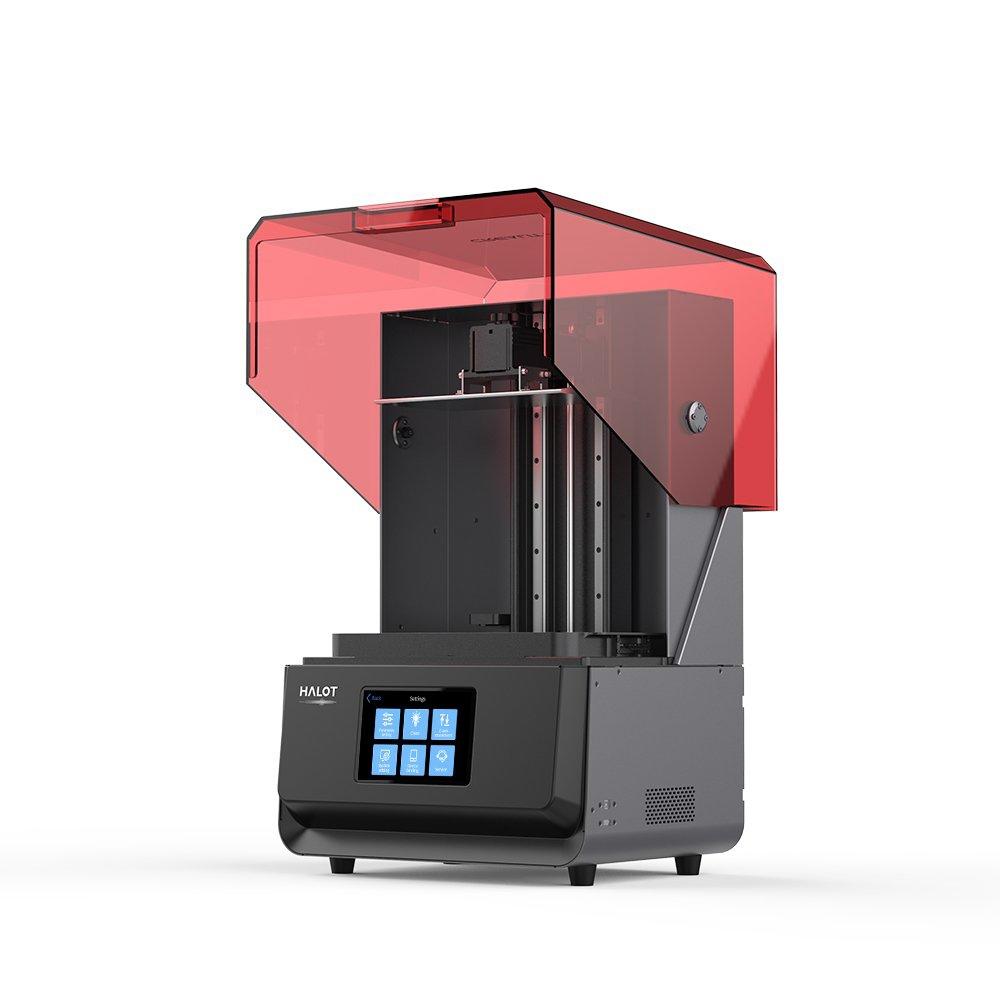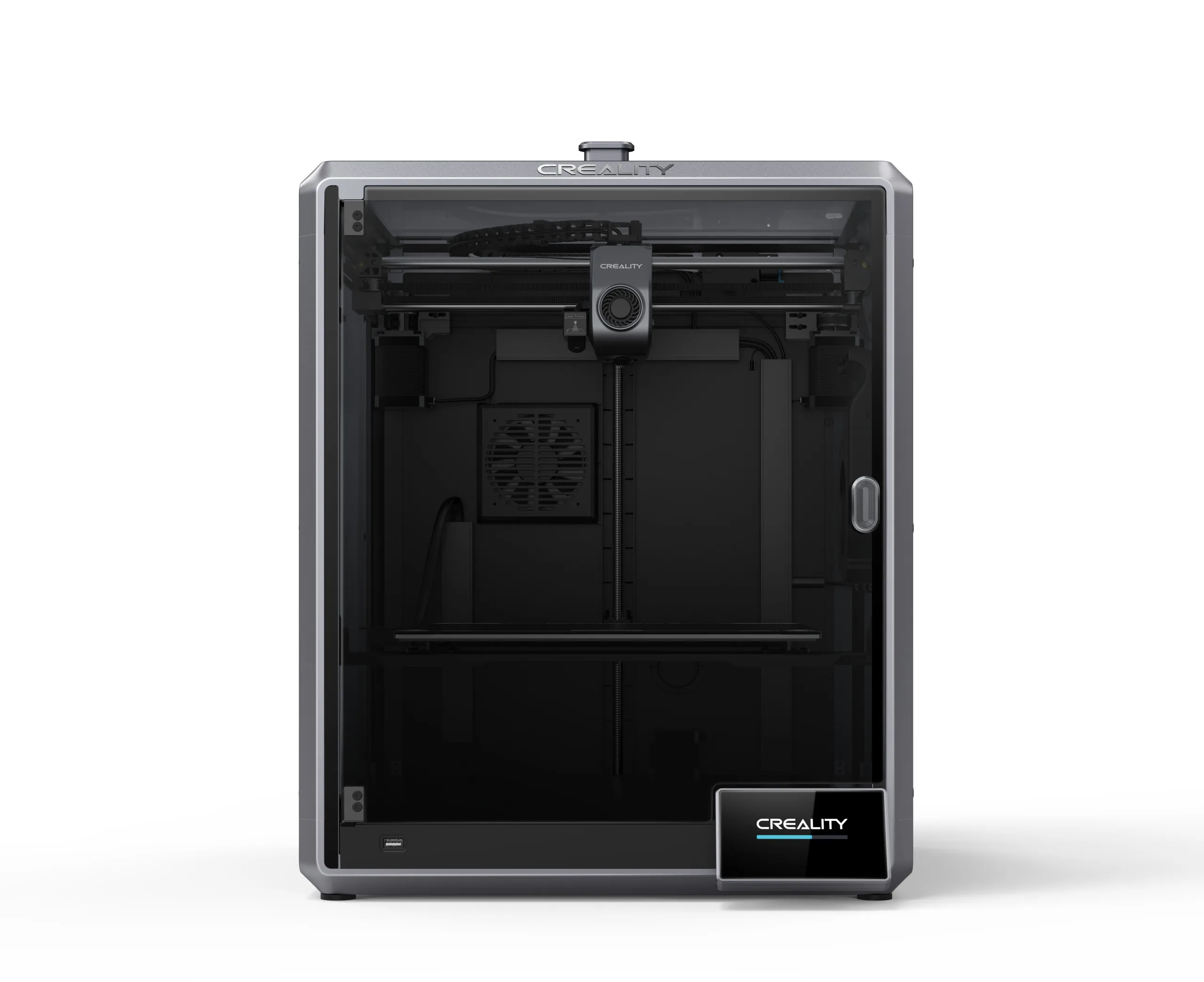Compare Halot Max vs K1 Max
Comparison between the best 3D printers
Choose the best 3D printer at the best price. The cheapest 3D printers are here.
Buy a 3D printer here with 3D Fila.
 |
 |
|
| Model | Halot Max[BUY Halot Max] |
K1 Max[BUY K1 Max] |
| Printing Material | Resin | Filament |
| Buy Resin for Creality 3D Halot Max | Buy Filament forCreality 3D K1 Max | |
| Estimated price | $3000,00 | $1300,00 |
| Manufacturer | Creality 3D | Creality 3D |
| Release Year | 2021 | 2023 |
| Print Volume [mm] | 293x165x300 | 300x300x300 |
| Printer Size [mm] | 480x387x770 | 435x462x526 |
| Weight [kg] | 32,5 | 18 |
| Power Loss Recovery | NO | YES |
| Maximum Resolution [mm] | 0,03 | 0,1 |
| Processor | ||
| Display | Display touchscreen 5'' | Display touchscreen 4,3'' |
| Power Supply | ||
| Connectivity | SD / USB / Wi-Fi | USB / Wi-Fi / Ethernet |
| Operating systems | Windows, Mac, Linux | Windows, Mac, Linux |
| Date of registration in the system | 2022-11-04 | 2023-12-01 |
| Release date | 2021 | 2023 |
| Extra features | The Halot Max printer stands out for its large print size (293 x 165 x 300 mm) and uses SLA technology. It has an integral light source for improved accuracy and a strong core with an advanced operating system. Its Z-axis module ensures high precision, supported by efficient slicing software. The machine offers online OTA updates and boasts an adjustable layer thickness between 10 and 200 microns. Its XY-axis resolution is 3840*2160, with 0.05 mm accuracy, and an integral 405nm light source. The printer includes a 5" touchscreen and multiple connectivity options, such as USB, Creality Cloud, and HALOT BOX WiFi. With cutting-edge technology, the Halot Max is ideal for printing small models with uniform precision, thanks to its self-developed lighting system and stable printing mechanism, which includes dual linear guides, ball screws, and an intelligent brake system. | The Creality K1 Max stands out as a fast Core XY 3D printer with a large build volume of 300 x 300 x 300 mm. It is fully enclosed and equipped with AI sensors to prevent print failures. This model has a smooth and flexible PEI build platform, and uses an automatic leveling system with LIDAR, as well as a filament run-out sensor. LAN, Creality Cloud and USB Flash Disk connectivity are available, as well as a 4.3-inch touchscreen interface. The K1 Max is robust, weighing in at 18 kg, and includes an AI camera and limited version of the Klipper firmware. Its motion system is solid and the printer is efficient with high-temperature filaments, but it is not silent. Assembly is 99% complete, requiring only minor adjustments before use. |
| Support for multiple colors and materials (AMS and CFS) | NO | NO |
Notes * |
||
| Cost-benefit | 5 / 10 | 7 / 10 |
| Hardware | 1.2 / 10 | 4.8 / 10 |
| Tela | . | . |
| Print volume | 3 / 10 | 4 / 10 |
| Performance | 9 / 10 | 5 / 10 |
| [BUY Halot Max] | [BUY K1 Max] |
Conclusion |
| In conclusion, when comparing the Halot Max and K1 Max 3D printers, the decision ultimately hinges on your specific printing needs, budget, and intended use. The Halot Max is a more premium option with advanced SLA technology, offering a higher maximum resolution and impressive build quality suitable for detailed models. It features a larger print size and essential capabilities like OTA updates, making it an excellent choice for those focusing on precision and quality in small-scale prints. However, its higher price point may deter budget-conscious buyers. On the other hand, the K1 Max presents itself as a value-driven, versatile option for users seeking to print larger objects. It benefits from newer technology, including automatic leveling and AI sensors to enhance the printing experience, though it sacrifices some resolution details compared to the Halot Max. Its more affordable price and user-friendly features make it an appealing choice for beginners or those looking for reliable performance without breaking the bank. Ultimately, if your priority is detailed, high-precision printing and you can warrant the investment, the Halot Max stands out. Conversely, if you're looking for solid performance with larger volume capabilities at a lower cost, the K1 Max is the better option. |

